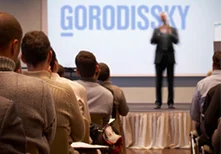Trade mark use or right abuse?
22 February 2017Trade mark registrations sometimes take turns which would not be expected in the normal run of things. The trade mark owner usually registers his trade mark to sell his goods, promote his services, etc. Sometimes the infrastructure is not ready and the trade mark is not used for some time. In order that the trade mark owner should not be too relaxed there is a pike in the lake to keep all trade mark owners awake. The pike in this context is the law which allows three years of carefree existence of a trade mark.
After that the trade mark may be cancelled because of non-use. Registration of a trade mark costs money but we may observe that non-use cancellation actions are not so uncommon. The reasons for non-use may be different, sometimes cancellation is painless but for the most part trade mark owners offer stubborn resistance. In some cases a trade mark may be saved if the trade mark owner issues a letter of consent to the plaintiff so the conflict is settled. Sometimes the trade mark owner creatively tackles the problem of non-use from the other side.
 In the case under consideration, the trademark owner "imitated" (the term used by the court) infringement in the absence of his own proper use. A trading house Ant-Prom (owner of the trade mark) sued Steel Force Ltd alleging infringement of its trade mark (registration 509395, pictured).
In the case under consideration, the trademark owner "imitated" (the term used by the court) infringement in the absence of his own proper use. A trading house Ant-Prom (owner of the trade mark) sued Steel Force Ltd alleging infringement of its trade mark (registration 509395, pictured).
It claimed R5 million ($85,000) in compensation. The infringement was found on the internet where the plaintiff found the image of his trade mark placed by the respondent. The designation was combined: the same figurative element and the word "Argus". The site of the respondent was attested by the notary public.
The plaintiff's trade mark was registered for goods in class 6 (common metals and their alloys; metal building materials; transportable buildings of metal; materials of metal for railway tracks, etc). The suit was satisfied in part. The court of first instance awarded compensation to the plaintiff of R30,000 instead of R5 million.
Steel Force (the respondent) advertised steel doors on its website. It appealed the judgment. The Court of Appeal reviewed the case and stated relying on the Civil Code (Articles 1477 and 1481) and the opinion of the Supreme Court that a trade mark serves to individualise the goods and it is one of the means of protection of industrial property. The "individualisation of goods" is the key phrase. The fact is that the plaintiff did not use the trade mark but wanted to defend it against another person's use. Given that, the court could refuse protection of the right for the trade mark if on the basis of factual circumstances it established abuse of rights on the part of the owner of the trade mark. The Civil Code contains a general requirement: the trade mark should be used when registered hence the acts of the trade mark owner aimed at making obstacles to the use of identical or similar marks in the situation where the trade mark owner himself does not use the mark should be regarded as unfair and should not be protected by court. In fact, the court termed it as "imitation of infringement".
The court also stated that aside from the fact of non-use it is always necessary to investigate the purpose of the registration, the real intentions of the trade mark owner and why the trade mark was not used. If it is established that the trade mark owner did not register his trade mark to use it himself or by the licensee but with the only purpose of forbidding other persons to use that designation, the right of the trade mark owner may not be protected.
In this particular case the use of the trade mark in respect of steel doors by the plaintiff was not confirmed by the documents on file. In fact, the official website of the plaintiff (attested by a notary) only showed that the plaintiff trades in screw piles, design of steel structures and transportation of cargo. There were several instances of sales of doors by the plaintiff before he initiated a court action but the small number of sold doors could not be confirmed due to efforts by the plaintiff to use the trad emark in relation to doors. This is echoed by the opinion long established in the Russian judiciary: when establishing the fact of use of a trade mark the sale of one Ferrari cannot be compared to the sale of several boxes of matches. Only after initiating a court action did the plaintiff arrange for a supply contract for steel doors and other documents.
In these circumstances the court cancelled the judgment of the first instance court and ordered the plaintiff to pay the court fee.
To access this website, we request that you read and accept the Terms of Use.










